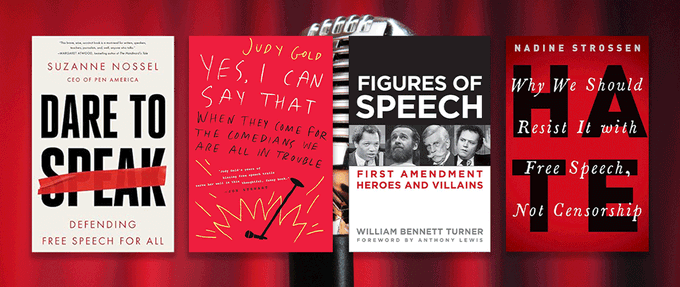Free speech, at first, seems a relatively simple idea—the freedom to express one’s thoughts and opinions freely, without fear of censure or attack.
It certainly seems like a basic human right that ought to be protected by democracies worldwide. In the United States, the First Amendment guarantees the freedoms of speech, assembly, and worship to all its citizens.
In theory, freedom of speech implies the right to express controversial (or even unpalatable) opinions without fearing any form of retaliation.
However, the reality is slightly more complex—there might be several circumstances in which the First Amendment rights do not apply, such as cases pertaining to child pornography, defamation, plagiarism of copyrighted work, or even calls for violence and harm.
Thus, depending on the circumstances, the principle of free speech may become murky. It’s definitely a fascinating topic—one that philosophers and legal scholars have debated endlessly and written countless books on.
So, if you’re in the mood for a deep dive into the freedom of speech, you can begin the intellectual journey with our carefully curated collection!
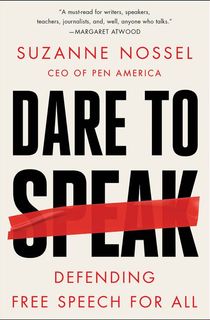
Dare to Speak
Those looking for an introductory primer on the topic of freedom of speech in today’s rapidly changing world can pick up a copy of Suzanne Nossel’s Dare to Speak which is packed with some incredible critical insights.
Nossel is a vocal champion of free speech, arguing for more inclusivity and diversity without compromising on the legal protections guaranteed by the right to freedom of speech.
In particular, Nossel provides some striking examples that will help you express your own ideas respectfully and engage in healthy discourse—whether in daily life or on social media.
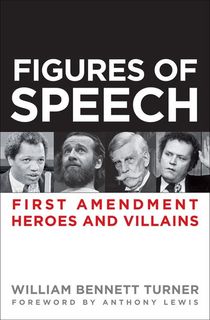
Figures of Speech
The First Amendment is one of the cornerstones of the American Constitution, enacted on December 15, 1791, as part of the Bill of Rights.
William Bennett Turner’s compelling book, Figures of Speech takes a look at the First Amendment itself—at important instances of legislation and the key figures that have shaped our ideas about what the protection of free speech means today.
A fun history lesson and filled with interesting facts, Figures of Speech presents legal ideas in an accessible and entertaining way.
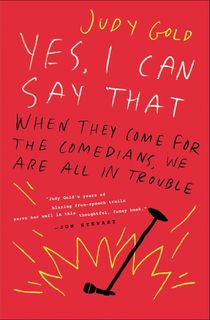
Yes, I Can Say That
Freedom of speech is often connected to freedom of artistic expression. Yet, in today’s polarized world, writers, artists, and comedians often come under fire for “offensive” comments on current affairs—when they’re just expressing their opinions in public.
Judy Gold’s timely and rather humorous book, Yes, I Can Say That, argues for using laughter as a mechanism to expose uncomfortable truths and inequalities, instead of repressing unpopular voices into silence.
Moreover, Gold highlights how comedy can be a vital tool for empowerment—and her brilliant book certainly doubles as a witty manifesto for budding comics.
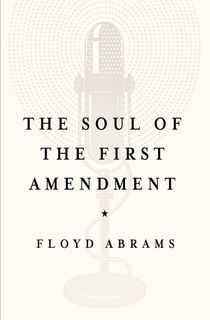
The Soul of the First Amendment
Like with Figures of Speech mentioned earlier, The Soul of the First Amendment by Floyd Abrams also takes a closer look at the U.S. Constitution, focusing on several First Amendment cases and controversies.
A lawyer specializing in First Amendment cases and visiting lecturer, Abrams brings his own legal expertise into the book, highlighting the importance of democracy and the harms of governmental censorship.
Short, concise, and thoroughly engaging, The Soul of the First Amendment can be of great use to both lawyers and laypeople in understanding the complexities of free speech.
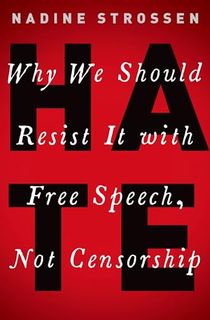
HATE: Why We Should Resist it With Free Speech, Not Censorship
“Hate speech” is undoubtedly a significant buzzword in today's world, and Nadine Strossen’s argumentative book delves into the debates surrounding hate speech versus free speech, powerfully arguing for equality and social harmony.
At just 200 pages, it’s rather densely-packed with compelling ideas and legal precedents—and readers will surely find it extremely educational, reframing social issues in a new light.
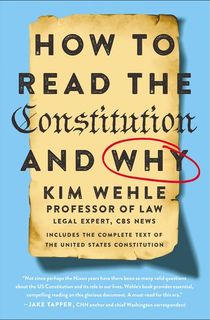
How to Read the Constitution—and Why
Every individual is born with certain rights, such as the freedom of speech, though they may not always be aware of them. Thus, awareness campaigns about one’s legal rights are crucial—and understanding how the U.S. Constitution works isn’t just a matter for lawyers but for all citizens.
However, legal jargon can seem terribly perplexing and difficult at first, and that’s where accessible handbooks like Kim Wehle’s How to Read the Constitution—And Why come in.
Wehle’s immensely readable book not just demystifies the U.S. Constitution, but also reveals how the values enshrined within it are gradually eroding.
It encourages readers to become more aware of their rights and take action when they are violated. From the right to free speech to the right to have an abortion, this in-depth, engrossing, and informative book covers it all.
Featured image: Elnur / Canva
